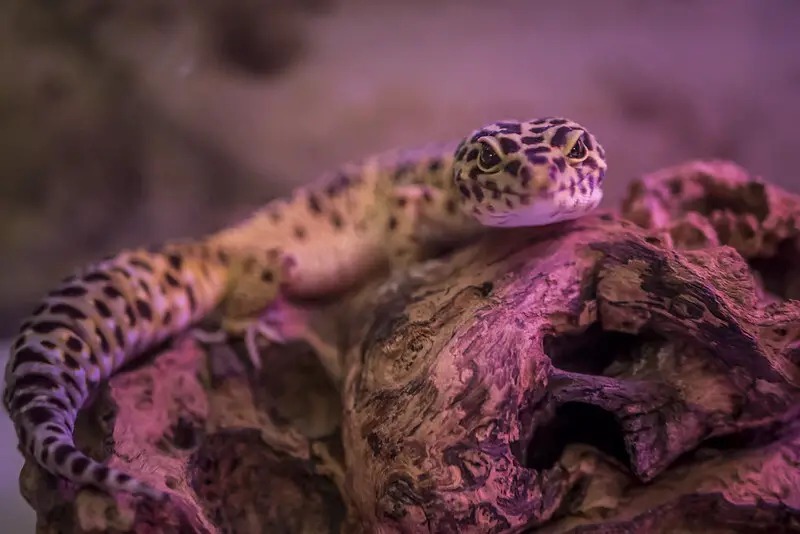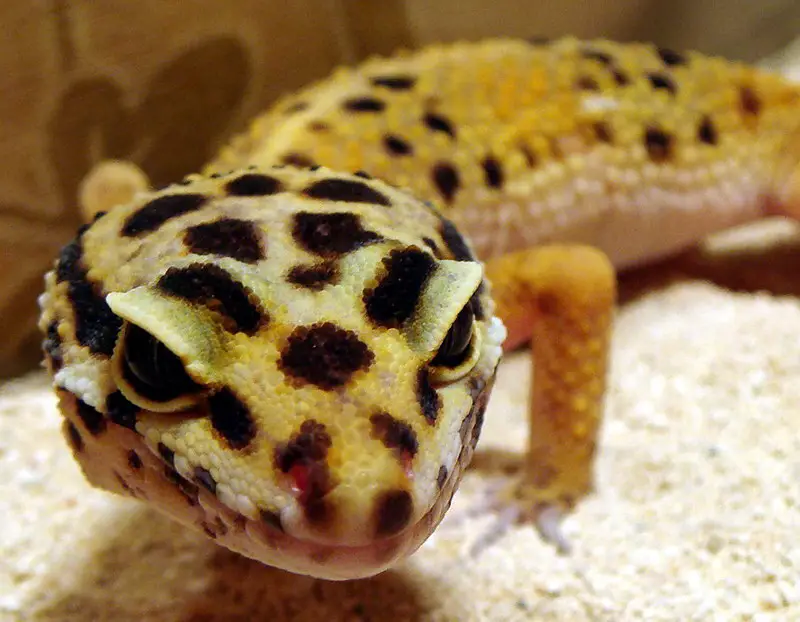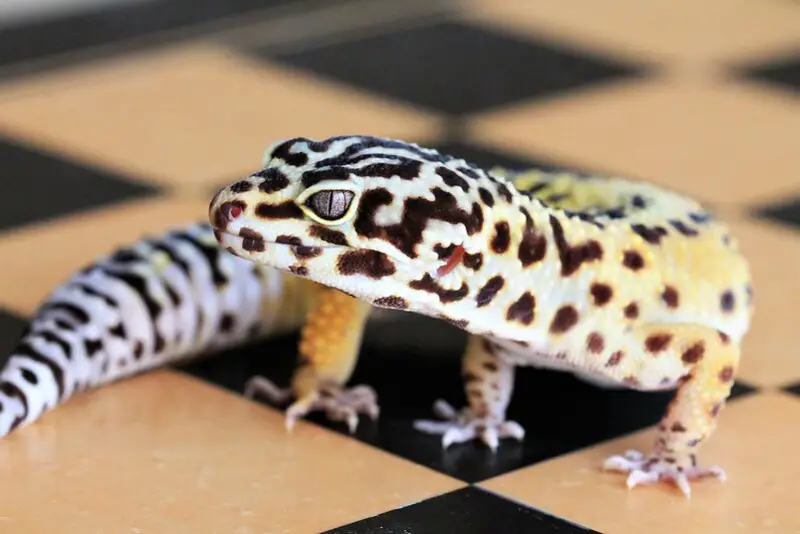Leopard geckos are one of the most popular reptile pets worldwide due to their gentle nature, striking appearance, and relatively simple care requirements. Leopard geckos are renowned for their distinctive appearance, characterized by their leopard-like spots and a fat, segmented tail. In captivity, they are available in various color morphs, ranging from the traditional yellow and black to more exotic combinations of colors and patterns.
When considering the question of whether or not leopard geckos can be kept together, it’s essential to delve into the intricacies of their biology, natural behavior, and captive husbandry needs.

Natural Habitat and Behavior
To understand whether leopard geckos can be kept together, it’s crucial to examine their natural habitat and social behavior in the wild. In the wild, leopard geckos are solitary creatures that inhabit arid and rocky desert regions. Their environment is harsh, with extreme temperature fluctuations between day and night. As a result, leopard geckos have adapted to be solitary animals, mainly because resources such as food and shelter are limited.
Leopard geckos are primarily insectivorous, feeding on a diet of crickets, mealworms, and other small invertebrates. They are known for their excellent hunting skills, using a combination of keen eyesight and a unique ability to locate prey by sensing vibrations through their specialized ear structures. Their solitary nature is also related to the need to reduce competition for limited food resources.
In the wild, leopard geckos are territorial and tend to maintain separate territories to avoid confrontations with other geckos. Male leopard geckos, in particular, are highly territorial and can become aggressive towards each other if they cross paths.
Pros and Cons of Keeping Leopard Geckos Together
Before we explore the possibility of keeping leopard geckos together in captivity, let’s weigh the pros and cons of cohabitation.
Pros of Keeping Leopard Geckos Together:
- Social Interaction: Leopard geckos are solitary by nature, but when kept together, they can engage in social interactions. This can be fascinating to observe, as they may display complex social behaviors like dominance, courtship, and territoriality.
- Reduced Loneliness: Some owners believe that cohabitation can help reduce loneliness in captive leopard geckos, especially when they are more active at night.
- Space and Cost: Cohabiting leopard geckos can share the same enclosure, which can save space and initial setup costs.
- Breeding Opportunities: If you intend to breed leopard geckos, keeping a male and female together can facilitate breeding.
Cons of Keeping Leopard Geckos Together:
- Stress and Aggression: In captivity, cohabited leopard geckos are more likely to experience stress and aggression. Aggressive behavior can lead to injuries, particularly in male-male pairings.
- Health Risks: Cohabitation increases the risk of transmitting diseases and parasites between geckos due to their close proximity.
- Competing for Resources: Multiple geckos in the same enclosure may compete for food, hiding spots, and basking areas, leading to stress and malnutrition.
- Breeding Challenges: While cohabitation can facilitate breeding, it can also lead to overbreeding, which is harmful to female geckos. Overbreeding can result in egg-binding and other health issues.
- Difficulty Monitoring: It can be challenging to monitor the health of individual geckos in a shared enclosure, as it’s harder to detect signs of illness or injury.
- Unequal Growth and Size: In mixed-gender groups, males are often larger and more dominant than females, which can lead to harassment and stress for the female geckos.
- Housing Considerations: Larger enclosures are required for cohabiting geckos to provide enough hiding spots and resources to minimize conflicts.
- Potential for Cannibalism: While not common, there have been instances of geckos cannibalizing each other, especially when there is a significant size difference between individuals.
Considering these pros and cons, it’s evident that cohabiting leopard geckos in captivity can be challenging and requires careful planning and management to ensure their well-being.

Cohabitation Strategies
If you decide to keep leopard geckos together, it’s essential to employ specific strategies to minimize the potential problems associated with cohabitation. Here are some tips to consider:
- Housing Requirements: Provide a spacious enclosure to reduce competition for resources. A minimum enclosure size for a pair of leopard geckos should be at least 20 gallons, with additional space for each additional gecko.
- Same-Gender Pairings: If you decide to keep multiple geckos together, it’s generally safer to have same-gender pairings, as male-male aggression can be particularly problematic.
- Monitoring and Quarantine: Regularly monitor the geckos for signs of stress, aggression, or illness. If you notice any issues, be prepared to separate the geckos into individual enclosures. Additionally, quarantine any new geckos before introducing them to an existing group to prevent disease transmission.
- Adequate Hiding Spots: Ensure there are multiple hiding spots in the enclosure to allow geckos to establish their territories and avoid confrontations. These hiding spots should be easily accessible and provide enough space for each gecko.
- Separate Feeding: When feeding, make sure each gecko gets its fair share of food. Hand-feeding or using separate feeding dishes can help prevent competition and ensure all geckos receive adequate nutrition.
- Breeding Considerations: If you plan to breed leopard geckos, set up a separate breeding enclosure and introduce the male and female for controlled breeding periods. Remove the male if the female shows signs of stress or overbreeding.
- Health Checks: Regularly check the geckos for signs of illness or injury. If any issues arise, consult a veterinarian with expertise in reptile care.
- Appropriate Group Size: Limit the number of geckos in a single enclosure to minimize stress and competition. Smaller groups are easier to manage and monitor.
- Mixed-Gender Groups: If you decide to keep mixed-gender groups for breeding purposes, ensure that there are multiple females for each male to distribute mating attempts and reduce harassment of individual females.
- Environmental Conditions: Maintain appropriate temperature and humidity levels in the enclosure, as environmental stressors can contribute to aggression and illness.
When Cohabitation Is Not Recommended
There are specific situations in which cohabiting leopard geckos is strongly discouraged or not recommended:
- Males with Females Year-Round: Keeping a male and female leopard gecko together year-round can lead to chronic stress for the female due to continuous mating attempts. It can also result in overbreeding, which is detrimental to the female’s health.
- Males with Multiple Females: In a group with one male and multiple females, the male may harass and stress the females, leading to injuries and reduced overall well-being for the females.
- Hatchlings or Juveniles with Adults: Cohabiting hatchlings or juveniles with adult leopard geckos can result in size-related stress, injuries, and even cannibalism, as adults may see smaller geckos as prey.
- Geckos with a Significant Size Difference: Mixing leopard geckos with a substantial size difference can lead to dominance issues, with larger geckos bullying and stressing smaller ones.
- Sick or Injured Geckos: Do not house sick or injured geckos with healthy ones, as this can lead to disease transmission and further stress for the affected gecko.
- Lack of Supervision: If you cannot commit to regular monitoring and intervention, it’s best to keep leopard geckos individually to avoid potential issues.

Alternative Housing Options
If you’re concerned about the risks and challenges of cohabiting leopard geckos, there are alternative housing options to consider:
- Individual Enclosures: Housing each leopard gecko separately is the safest and most straightforward approach. Each gecko will have its own territory, reducing stress and potential aggression.
- Communal Reptile Rooms: If you have multiple leopard geckos, you can set up a communal reptile room where each gecko has its own enclosure. This allows for social interactions while ensuring individual spaces for each gecko.
- Rotating Group Housing: Some owners rotate geckos in and out of communal enclosures, allowing for social interaction while avoiding long-term cohabitation. This can reduce stress and aggression.
- Breeding Enclosures: When breeding leopard geckos, set up specific enclosures for mating and egg-laying, and then separate the adults to avoid overbreeding and stress on the female.
Conclusion
In conclusion, whether or not you can keep leopard geckos together depends on various factors, including their individual personalities, the enclosure setup, and your willingness to monitor and intervene when necessary. While it is possible to cohabit leopard geckos with careful planning and attention to their needs, it’s essential to consider the potential risks and challenges, as well as the well-being of the geckos.
Cohabitation may offer opportunities for social interactions and breeding, but it also increases the likelihood of stress, aggression, and health issues. It’s crucial to prioritize the safety and welfare of your leopard geckos when making decisions about their housing arrangements.
Before deciding to cohabit leopard geckos, carefully weigh the pros and cons, and consider alternative housing options. If you choose to keep them together, implement strategies to minimize stress, aggression, and health risks. Regularly monitor the geckos and be prepared to separate them if issues arise.
Ultimately, the well-being of your leopard geckos should be your top priority, and your housing decisions should reflect this commitment to their health and happiness.
